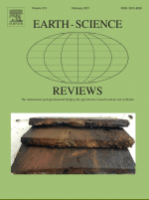“Amber is fossilized resin that preserves biological remains in exceptional detail, study of which has revolutionized understanding of past terrestrial organisms and habitats from the Early Cretaceous to the present day. Cretaceous amber outcrops are more abundant in the Northern Hemisphere and during an interval of about 54 million years, from the Barremian to the Campanian. The extensive resin production that generated this remarkable amber record may be attributed to the biology of coniferous resin producers, the growth of resiniferous forests in proximity to transitional sedimentary environments, and the dynamics of climate during the Cretaceous. Here we discuss the set of interrelated abiotic and biotic factors potentially involved in resin production during that time. We name this period of mass resin production by conifers during the late Mesozoic, fundamental as an archive of terrestrial life, the ‘Cretaceous Resinous Interval’ (CREI).” Published in Earth-Science Reviews

